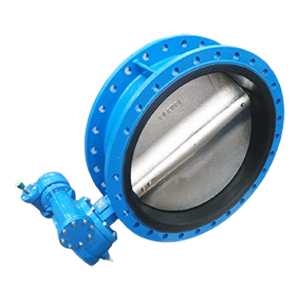When it comes to waterworks infrastructure, wastewater treatment, and municipal pipeline systems, few valve types are as reliable and widely used as the AWWA butterfly valve. Known for their cost-effectiveness, ease of operation, and long service life, these valves play a crucial role in regulating flow in large-diameter water systems. But what makes them stand out, and how do you choose the right one for your application?
In this article, we’ll cover everything you need to know about AWWA butterfly valves—from standards and construction to applications and key selection tips.
1.What Is an AWWA Butterfly Valve
An AWWA butterfly valve is a type of quarter-turn valve designed to regulate or isolate the flow of fluids, especially in waterworks and wastewater systems. The acronym “AWWA” stands for the American Water Works Association, which sets the standards for design, manufacturing, and performance of valves used in municipal and industrial water systems.
The most common specification for these valves is AWWA C504, which outlines the requirements for rubber-seated butterfly valves from 3 inches (75mm) through 72 inches (1800mm) in diameter.
2.Key Features of AWWA Butterfly Valves
-
Quarter-Turn Operation
The disc rotates 90 degrees to fully open or close the flow path, enabling fast operation and minimal pressure loss. -
Resilient Seated
These valves use rubber or elastomeric seats to ensure a tight seal and prevent leakage, even after prolonged use. -
Corrosion Resistance
Internal and external coatings (typically epoxy) protect the valve body and disc against corrosion in harsh water conditions. -
Compact Design
Compared to gate valves, AWWA butterfly valves are lighter and take up less space, which is ideal for tight installations. -
Long Service Life
With proper maintenance, these valves can last decades in service, especially in clean water applications.
3.AWWA C504 VS AWWA C516
While AWWA C504 covers standard rubber-seated butterfly valves, the newer AWWA C516 addresses high-performance butterfly valves (HPBVs), which are suitable for higher pressure and more demanding applications.
| Feature | AWWA C504 | AWWA C516 |
|---|---|---|
| Pressure Ratings | Up to 250 PSI (Class 150B) | Up to 300 PSI or higher |
| Seat Type | Resilient (Rubber Seated) | Resilient or Metal Seated |
| Applications | General waterworks use | High-pressure or severe duty systems |
| Torque Requirements | Moderate | Higher due to tighter sealing |
4.How to Choose the Right AWWA Butterfly Valve
-
Pipe Size and Pressure Rating
Match the valve size and class with the system’s requirements. AWWA valves are available in multiple pressure classes (e.g., 150A, 150B). -
Service Media
Confirm compatibility with water, wastewater, or other fluids. -
Operating Conditions
Evaluate temperature ranges, pressure, and whether throttling or isolation is needed. -
End Connections
AWWA butterfly valves are available with flanged, grooved, or mechanical joint ends. -
Actuation Method
Choose between manual gear operation, electric actuators, pneumatic or hydraulic systems based on system automation needs. -
Certifications
Ensure the valve complies with AWWA standards, and if used in potable water systems, it should be NSF 61 certified.
Post time: May-14-2025

